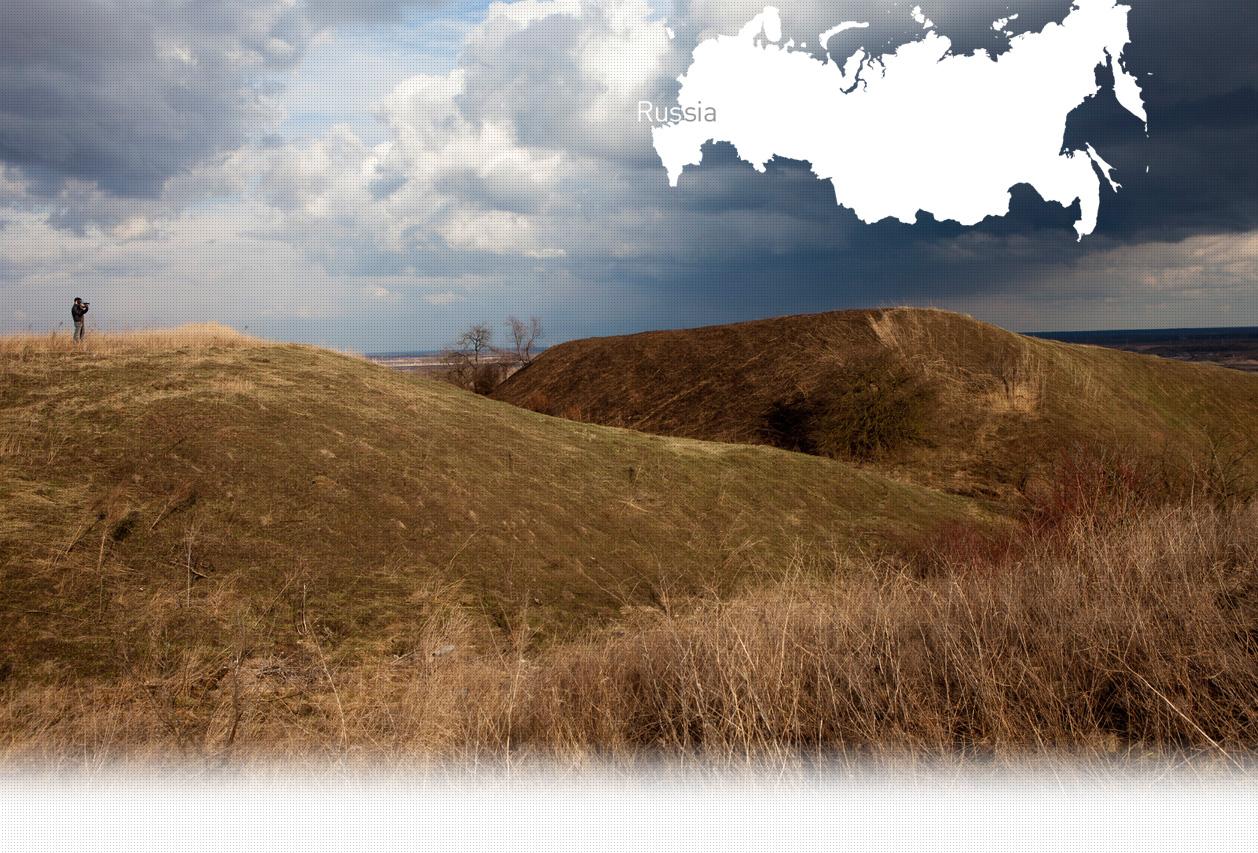

2 Killing site(s)
Mikhail M., born in 1928: “I remember this Jewish family of three, an old couple and their 18-year-old daughter. They were shot by three German soldiers in gray uniforms. They were taken to a hole dug in a quarry away from the village. The young girl tried to flee but she was shot in the back by a German and then thrown into the hole. The old couple was shot from behind in front of the hole. The Germans only threw a few rocks in the grave and left it like that. A week later, the smell was unbearable. It was summer.” (Witness YIU/217R, interviewed in Opyonki on October 4, 2011)
“Moved by fierce hatred of Russian people, the German fascist occupiers committed monstrous atrocities in the town of Prolestarskaya and in the district of Prolestarskii. There isn’t a crime that the Hitlerian executioners did not commit. Systematic killing, theft, abuse, sexual violence on women. This was all committed by the Hitlerians on such a scale that there is no doubt left that they did so on direct order and encouragement from the German command. […] In the town and all over the district the German slavers gathered 1,800 teenagers, young men and women, forcefully separating them from their families, and sent them to work in Germany.” [Act n°793 drawn up by Soviet State Extraordinary Commissio, GARF 7021-40-777]
Opyonki is a village in the Proletarskii district, Rostov region, southwest Russia. It is located about 230 km (143mi) east of Rostov-on-Don. After the revolution, the village became ‘sovkhoz Proletarskii’, for its closeness to the town of Proletarsk. There were many Volksdeutsche living in the village. They were relocated to Germany in 1936. Because it was outside the Pale of Settlement at the time of the Russian Empire, there was no Jewish community in Opyonki, even after the Bolshevik revolution. As war broke out between Nazi Germany and the Soviet Union in 1941, however, many Jews fled eastwards and sought refuge in the Rostov region, including a few families in Opyonki. The Jewish refugees lived with the locals in their houses. Many who had enough money bought carts and continued their journey eastward.
The German occupation of Opyonki started in July 1942. A witness remembers that the Germans put up signs inviting Jewish refugees to present themselves at the Kommandantur, promising them a better life. But there were also drawings put up depicting Jews as slavers.
There were not many Jews in Opyonki itself, but it seems the few Jewish families in the village were all caught by the Germans and shot on separate occasions. Yahad – In Unum found the confirmed execution site for two such families, five people in total. One of the families shot was composed of an older couple and their 18-year-old daughter. They were taken by three German soldiers to a nearby quarry outside the village and shot there. They were barely buried.
The other confirmed shooting Yahad discovered is that of two Jewish women, a mother in her twenties and her daughter. They were both shot in the same quarry by four Germans. Their bodies were left in one of the holes in the quarry, unburied. Once they shot the women, the Germans left in their car, that was parked nearby. It is likely other such shootings happened in this quarry, following the same modus operandi.
Just before the village was liberated, a huge column of prisoners marched through the village. There were about 200 of them, some on foot, some on carts. The Germans allowed the locals to get nearer to see if they knew anyone. But Soviet planes flew above, creating panic, and many prisoners escaped. The next day, the Red Army liberated Opyonki, in January 1943.
Do you have additional information regarding a village that you would like to share with Yahad ?
Please contact us at contact@yahadinunum.org
or by calling Yahad – In Unum at +33 (0) 1 53 20 13 17